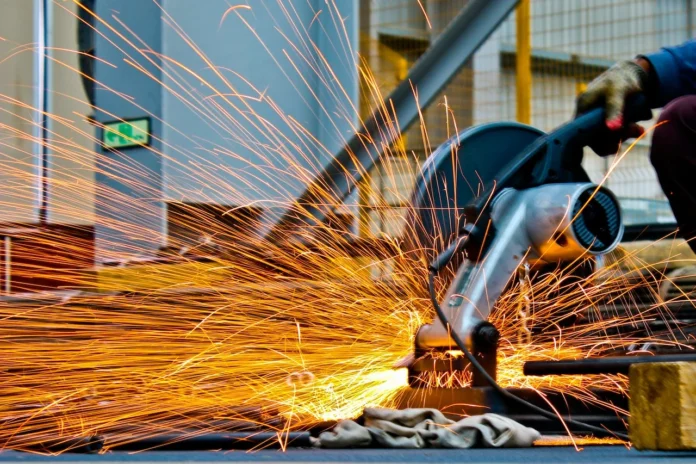In any metalworking industry, safety is always the top priority. Whether working in a small shop or a large manufacturing facility, the potential hazards of metalworking can be significant. Working with metalworking machines requires skill, precision, and attention to detail, but accidents and injuries can happen if basic safety rules and guidelines aren’t followed. This can put workers at risk and lead to costly downtime, damage to equipment, and even legal issues.
That’s why we’ve put together this blog post, which outlines Five basic safety rules to remember when working with metalworking machines. Following these guidelines can help ensure a safe and productive workplace for yourself and your coworkers.
Safety Rule #1: Wear Appropriate Safety Gear
The first and most important safety rule when working with metalworking machines is to wear appropriate safety gear. This includes safety glasses, earplugs or earmuffs, gloves, and sturdy work boots. Safety glasses or goggles protect your eyes from flying debris, while earplugs or earmuffs protect your hearing from the loud noise generated by metalworking machines. Gloves help protect your hands from sharp edges, while sturdy work boots with slip-resistant soles provide a firm grip and protect your feet from falling objects.
Safety Rule #2: Keep the Work Area Clean and Tidy
Another essential safety rule when working with metalworking machines is to keep the work area clean and tidy. This means clearing any clutter or debris and wiping down the machines and work surfaces to remove oil or other substances that could cause slips and fall. It’s also a good idea to organize your tools and materials so they are within easy reach and won’t get in the way of your work.
Safety Rule #3: Practice Safe Work Habits
When working with metalworking machines, practising safe work habits is important. Keep your hands and fingers away from moving parts, and never reach into a machine while running. Never wear loose clothing or jewellery that could get caught in the machine, and tie back long hair. If you need to adjust the device or change the cutting tool, always turn off the power and wait until the engine has come to a complete stop before making any changes.
Safety Rule #4: Inspect Machines Regularly
Regular inspections are essential for maintaining metalworking machines. Inspecting your equipment, and your compressed air systems, for any signs of damage or wear before operating it is crucial. Look for loose bolts, worn belts, and other potential safety hazards, and address any issues promptly. Inspections help prevent accidents and ensure that your machines operate safely and efficiently. Inspecting your equipment can help minimize the risk of accidents and prolong the life of your metalworking machines.
Safety Rule #5: Seek Professional Training
Ultimately, seeking professional training before operating any metalworking machine is important. This may include formal training from an accredited institution, like a safety consultant. Proper training can help you develop the skills and knowledge you need to use the machine safely and effectively and can help you avoid costly mistakes and accidents.
In addition to the safety measures mentioned above, it’s also important to consider the air quality in your metalworking facility. Metalworking machines can produce harmful oil mist, which can cause health problems for workers and damage equipment. You can install safety kits like the popular oil mist collectors in Ontario in your facility to address this issue. These collectors effectively capture and remove oil mist from the air, improving air quality and protecting workers’ health. By implementing this equipment in your facility, you can create a safer and healthier work environment for your employees while prolonging the lifespan of your equipment.
Takeaway
Working with metalworking machines can be a challenging but rewarding endeavour. However, it’s essential to prioritize safety in all aspects of your work, including machine operation, maintenance, and air quality. By implementing the safety tips and measures discussed above, you can help create a safer and healthier work environment for yourself and your employees while extending the lifespan of your equipment. Remember to stay vigilant, regularly inspect your machines, and take precautions to prevent accidents and minimize risks. You can achieve success and satisfaction in your metalworking endeavours with a dedication to safety and excellence.


